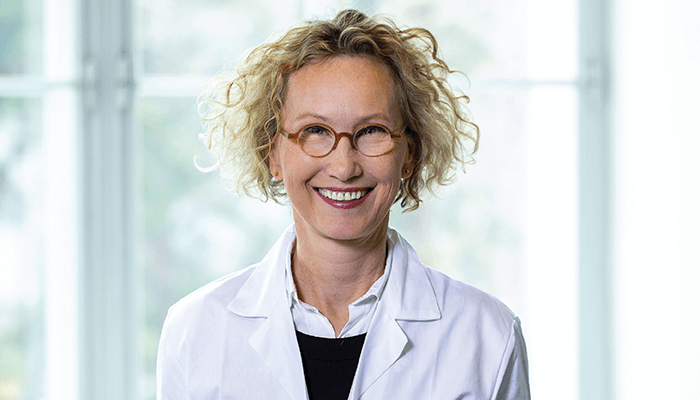
Ursula Schmidt-Erfurth, MD, is Professor and Chair of the Department of Ophthalmology at the University Eye Hospital, Vienna, Austria, and one of the leading figures in advancing – and advocating for – AI in retinal medicine. We sat down with the Power List alumnus to learn more about the research she presented at this year’s ARVO meeting.
What are some of the initial results from the research into geographic atrophy (GA) and its treatment with pegcetacoplan injections?
The results are extremely exciting. There have been a lot of attempts to treat GA – a devastating disease, which is actually the most frequent reason for progressive irreversible vision loss. All previous attempts failed.
This is the first study that showed a statistically significant reduction of the expansion of GA lesions in the retina in patients who were treated with intravitreal injections of an antibody blocking C3.
My group analyzed the retinal images of those patients – this is, after all, where the disease progresses. By using AI, we explored these images at the pixel level, showing where the damage is and where we can slow progression.
We were able to show that the photoreceptors – the functional elements in the retina – are actually protected to an even greater extent than the retinal pigment epithelium layer.
The future is now that the community understands the novel insight – and that we are all empowered to take care of a huge wave of desperate patients with GA. It’s a big call and a big responsibility.
So the deep learning model helped validate the efficacy of the treatment?
Very much so. And I would expand that statement by saying it’s important to understand disease activity before treatment. We are fighting against a giant – one that is very active in one subset of patients, non-active in another subset, and with a spectrum of activity in between. AI-based OCT analysis allows us to identify the patients with active disease – those who would benefit from life-long treatment. And let me stress that this treatment does not restore vision but rather prevents further visual loss in the long term.
We can then monitor those patients to see if the treatment is working and most importantly bring the patients on board who need to know that it’s worth coming to get their injections on a monthly or bimonthly basis for the rest of their life.
How can AI-based technology become embedded in clinical practice?
There are several steps that must be taken. But first of all, OCT has to become the gold standard in diagnostics and monitoring in GA, which is currently not the case yet as long as no therapy could be offered.
Previous – or let's say “old-fashioned” – trials relied on fundus autofluorescence, which doesn't tell us what really happens deep down in the retina – where the photoreceptors are located.
We need rules and regulations to efficiently introduce OCT as a major diagnostic tool in GA – just like it is in wet AMD. In GA, the biomarkers of relevance such as photoreceptors are not easily visible for the human expert, therefore advanced OCT analysis is essential. In our AI analysis, we found that we could even measure the thinning of the photoreceptors and, by observing this process, we can predict on an individual basis which patients will become worse and which patients will most benefit from treatment.
AI is perhaps one of the most appealing and challenging term in ophthalmology at the moment – this is not artificial nor is it a kind of intelligence. It’s just a very reliable and objective image analysis tool that allows us to measure changes directly in a patient’s retina.
What were your own personal highlights from ARVO 2023?
My personal enjoyment after COVID always comes from meeting real people! It’s great to have direct discussions, to properly hear what other experts say and what they mean, to look into their eyes, to shake hands. And you get to meet many people at well organized meetings.
I think a culture of discussion is also extremely important – and it’s something I enjoyed a lot at ARVO. I very much hope that these types of face-to-face meetings become as strong as they used to be – or even stronger – because we don't want to be replaced by chatGPT, yet we need to be empowered by state-of-the-art technology!
Good communication and scholarly exchange should be multimodal – and ARVO is certainly one of the most multimodal conferences!
